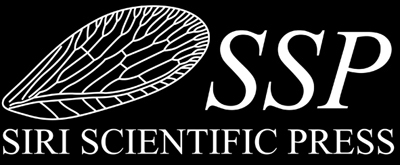News — New research
New approaches to the evolution and identification of wasps
Posted by David Penney on
Wing venation patterns in insects provide useful characters with which to classify living and fossil insects. Recently, quantification of its shape using landmarks (morphometric analysis) has increased the potential of wing venation to distinguish individual taxa such as species. However, the use of wing landmarks in elucidating how the species are related to one another (phylogenetic analyses) remains largely unexplored. In research just published in the journal Cladistics, Adrien Perrard and colleagues tested landmark analysis under parsimony (LAUP) to include wing shape data in a phylogenetic analysis of hornets and yellow jacket wasps. Using 68 morphological characters, nine genes and wing...
It's not all just about work at Siri Scientific Press
Posted by David Penney on
Although the main activity at Siri Scientific Press is the publication of specialist natural history books focused on palaeontology and entomology, there is more to us than that! We are also involved in academic research activities and are always happy to take a little time out for the fun things as well, in addition to trying to encourage youngsters with an interest in science and nature. On Tuesday and Wednesday we were happy to host Dean Lomax, the author of two of our titles: Dinosaurs of the British Isles and Fossils of the Whitby Coast. In addition to the discussions...
- 0 comment
- Tags: Just for fun, New research, News
Unusual fossil flea in 15-20 million-year-old amber
Posted by David Penney on
Fossilized fleas in amber are exceptionally rare, with only a handful of specimens discovered to date. All of these have been referred to modern groups still alive today, including (initially), a remarkable specimen in Dominican amber with unique features that warrant new tribal status. These properties are five-segmented maxillary palps and a pair of cerci-like organs positioned on tergite-X near the tip of the abdomen. The new species Atopopsyllus cionus was described by Dr. George Poinar, Jr., an entomologist from Oregon State University who published his findings in the latest edition of the Journal of Medical Entomology. Atopopsyllus cionus in Miocene...
- 0 comment
- Tags: New research, News
Computer CGI brings fossil amber insects back to life
Posted by David Penney on
We are all familiar with CGI images of dinosaurs on our TV screens, but few may be aware that the same technology has been used to bring fossil insects 'back to life' as well! New research just published in the journal Arthropod Structure & Development (click here) revisits the fossilized larva of a green lacewing Hallucinochrysa diogenesi preserved in Cretaceous amber from Spain, originally described in 2012. The new article expands on the presumed behaviour of this species and includes a CGI video reconstruction of the larva in action. The video can be viewed by clicking here. This remarkable fossil...
- 0 comment
- Tags: New research, News, Special offer
